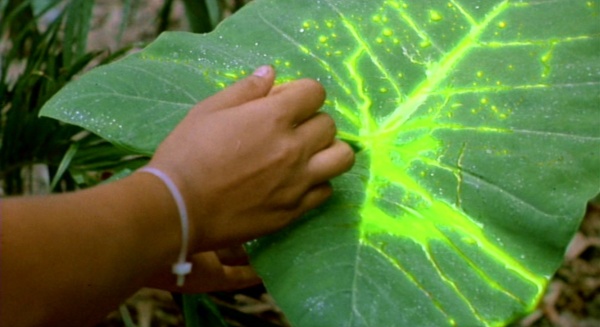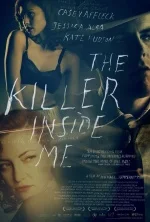Dream a Little Dream a Little Dream a Little Dream
2010 // USA // Christopher Nolan // July 22, 2010 // Theatrical Print (St. Louis Cinemas Moolah Theater)
B+ - "Ambitious" is a term frequently affixed to films solely due to the scale or complexity of their production, whether the work in question is one of the opulent, magisterial epics of old or a contemporary blockbuster that recruits battalions of computer wizards for its virtual world-building. One could say that Christopher Nolan's Batman films warrant the label, if only because of their fulsome design and dizzying scope. However, Nolan's taste for the ambitious is focused foremost on narrative, as epitomized in the disorienting, reversed chronology of his breakout art-house noir, Memento. Two years after The Dark Knight trampled everything in its path, that film's sprawling, relentless, and often preposterous plot nonetheless endures as a grueling feat of sustained anxiety and twenty-first century terror. Now we come to Inception, the first feature written solely by Nolan since his 1998 debut Following, and it is, if anything, a doubling down on the director's fascination with convoluted storytelling. Who else but Nolan could weave a tale that unfolds simultaneously in four linked dream worlds, where time dilates to varying degrees but always ticks inexorably forward? Who else would have the heedless ambition to even attempt such a thing, to convey such an elaborate scenario through the language of film? Who else but Christopher Nolan would even want to try?
Set in the unspecified but not-too-distant future, the film introduces us to Cobb (Leonardo DiCaprio) and his partner Arthur (Joseph Gordon-Levitt), a pair of "extractors": black-market mind-hackers who are skilled at ferreting out a person's most closely guarded secrets, preferably without their knowledge. To accomplish this, the sleeping victim is shunted into a dream world constructed by the extractors, who them attempt to outwit the victim and recover the secret, quite literally in their sleep. Given that this is a Christopher Nolan joint, the process is a good deal more complex than this straightforward description might suggest. Most of the first forty minutes or so of Inception are occupied with elucidating the rules of the film's central science-fiction conceits, although the exposition continues in dribbles well into the third act. One might expect this to render the film almost unbearably talky, but Nolan does a characteristically masterful job of blending together the showing and the telling, cutting across past and present and weaving in voice-over. This approach has been a essential aspect of the director's dramatic arsenal since Batman Begins, but the effect remains engrossing, propulsive, and a little cheeky, as if Nolan were daring us to keep up. The principles governing the process of extraction are bent (and often broken) as quickly as the film establishes them, providing little accommodation for viewers who stumble over the conceptual twists and turns.
During an extraction in the mind of a Japanese tycoon named Saito (Ken Wanatabe), Cobb and Arthur are stymied when their victim reveals that he is wise to the pair's tricks, which include a dream-within-a-dream ruse. They soon learn that Saito is actually auditioning them for a more challenging task: a reverse extraction known as an inception, which entails planting an idea so deeply in the victim's mind that they believe it to be their own. Saito wants Cobb to subconsciously convince Robert Fischer (Cillian Murphy), the son of a billionaire rival, to break up his family's empire following his father's death. Moreover, Saito insists on tagging along during the inception in order to protect his investment. Despite his misgivings, Cobb accepts the job, chiefly because Saito pledges to eradicate his criminal record, arrange for his legal entry into the United States, and reunite him with his children.
This sets up the rest of the story, which, when you strip away the mind-bending sci-fi trappings, is essentially a heist film. True to the form of the genre, Cobb and Arthur set off on a globe-trotting mission to recruit an international team of experts for this unlikely feat of mind-hackery. Their team includes Eames (Tom Hardy), an undercover operative who poses as one of Fischer's confidants in the dream; Yusuf (Dileep Rao), a pharmacologist who devises a specialized sedative; and Ariadne (Ellen Page), a prodigy skilled at constructing the custom dreamscapes the team utilizes for the inception. These dreamscapes are decidedly crisp affairs, more akin to virtual reality simulations than the fluid, surreal environments of real dreams. All the same, Nolan makes ingenious use of the familiar uncanniness of our sleeping world, lending credibility to the notion that the film's slick, stylish vistas are actually dominions of the mind. Confronting a man in the dreamscape, Cobb poses the question, "How did you get here?" The dreamer can't answer, because dreams don't ever seem to have real beginnings, do they? You're hailing a cab on a street corner, sitting in a hotel bar, standing on a snowy mountainside, and you're off. Moreover, time dilates in the dreamscape, such that an hour takes only five minutes in the real world, a detail that seems spookily accurate given my own dreaming experiences.
Saito arranges for the team to be alone with Fischer in the first-class cabin of a trans-oceanic flight, where they drug him and begin the mind-hack. As if their task weren't challenging enough, Cobb explains that in order to shield the team from detection, they must create three successive layers of dreams and escort Fischer through them in order to seed the notion of a corporate breakup at the "lowest" level: a dream within a dream within a dream. The events in a higher dream echo downward, such that a dreamer spattered with water in Dream A will find it begins to rain in Dream B. Moreover, this nesting of dreamscapes results in greater and greater time dilation the deeper the team goes, which is basically a clever excuse for Nolan to indulge in some phenomenally inventive, vertigo-inducing storytelling. To cite the most conspicuous example, roughly the final hour of the film takes place during the few seconds it takes a van to fall from a bridge into a river. As bewildering as it can be to keep up with the multiple storylines and different rates of time, Nolan somehow manages to continually tighten the vice, such that the entire heist essentially plays as a stacked series of action sequences, each one dependent on the outcome of the next. The story's complexity is nothing short of breathtaking, with Nolan pulling off the narrative equivalent of a plate-spinning act.
The final wrinkle comes in the form of Mal (Marion Cotillard), a spiteful hobgoblin that lurks in Cobb's subconscious and is based on memories of his wife. She—who, of course, isn't a "she" at all, but actually a fragment of Cobb's own mind—has a nasty habit of maliciously sabotaging his dreamscapes. Cobb hasn't revealed this to his team, but Ariadne quickly tumbles to the fact that he is hiding crucial details about his past and endangering them all. This aspect of the story inevitably calls to mind Shutter Island from earlier this year, in that both films feature DiCaprio in the role of a man whose guilt has psychologically mutilated him. However, the success of Scorsese's film rests to a large extent on the palpable rawness of DiCaprio's anguish, while Nolan asks little of the actor other than sheer conviction. This isn't inconsistent with Nolan's post-Memento mode: evocative and moody, often with a bitter-sour tang, but lacking a truly poignant connection between character and viewer. Such a negligent approach to character needn't be a failing, given that a convoluted action film executed with acrobatic deftness has a purity all its own. However, it does betray that Nolan himself never quite accepts the supposed emotional potency of Cobb and Mal's tragic story, which invites the question of why the viewer should care. Inception's real strength is that of an exigent science-fiction thriller that pushes the limits of storytelling, the sort of grand cinematic contraption that seduces with its sheer baroque audacity. Nolan's vision may be more polished and literal-minded than a genuine state of dreaming, but it nonetheless leaves you breathless, unsteady, and wondering what just happened.





















